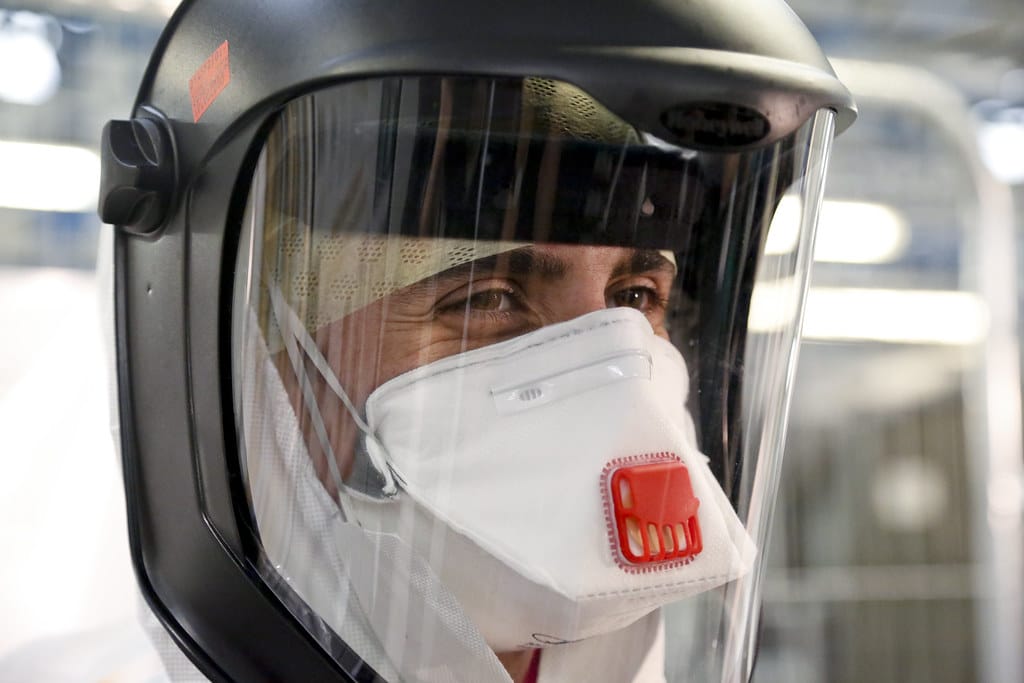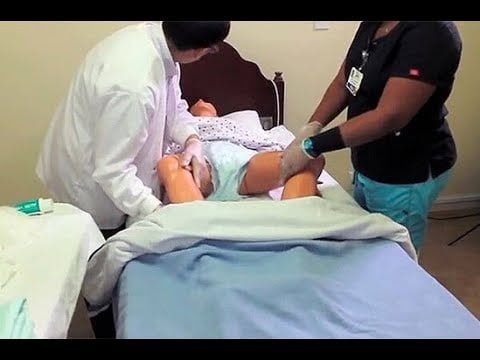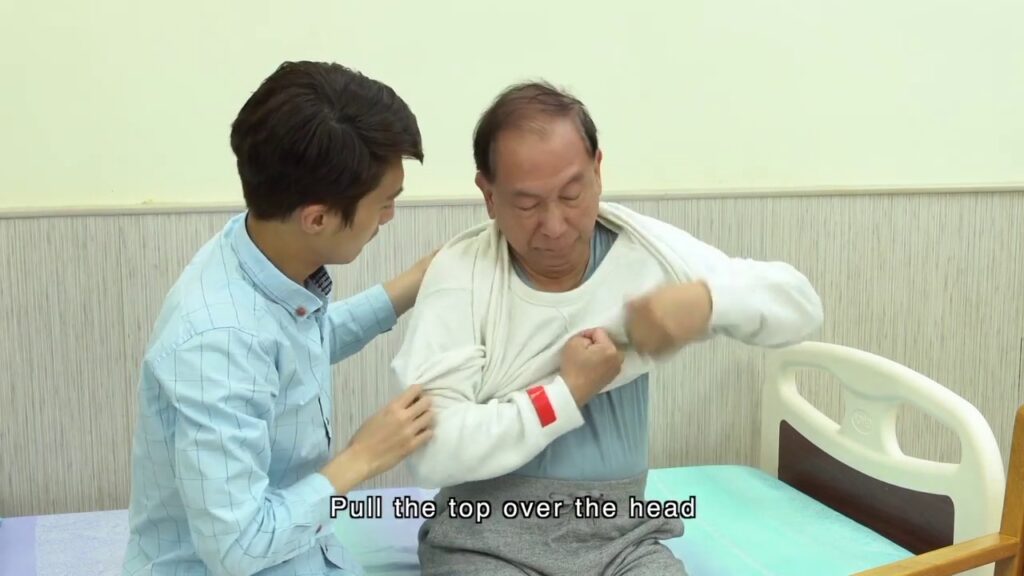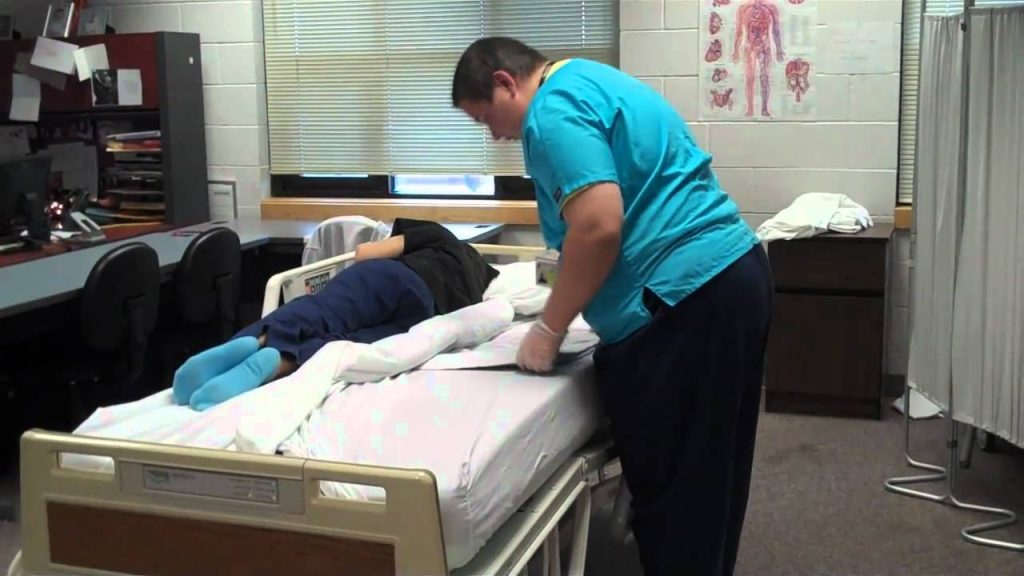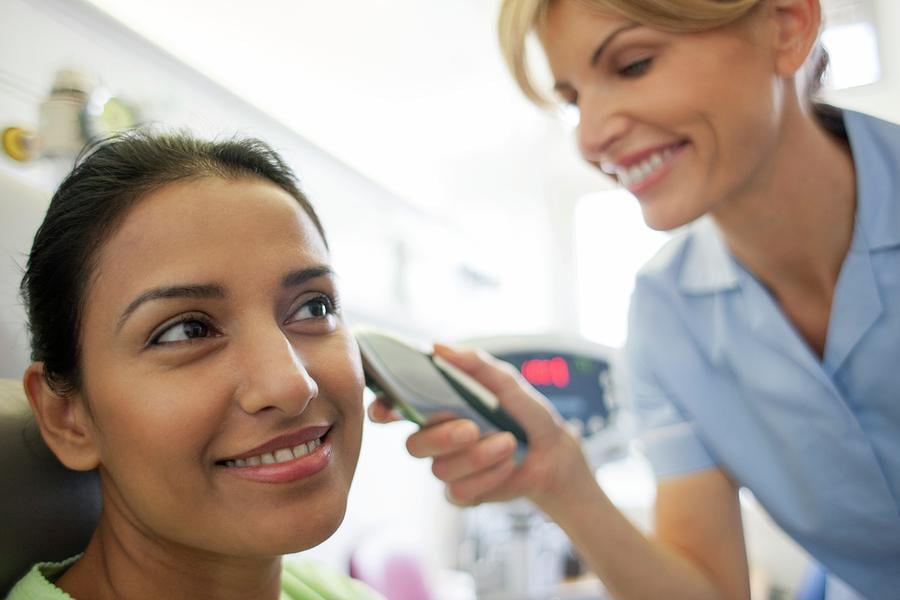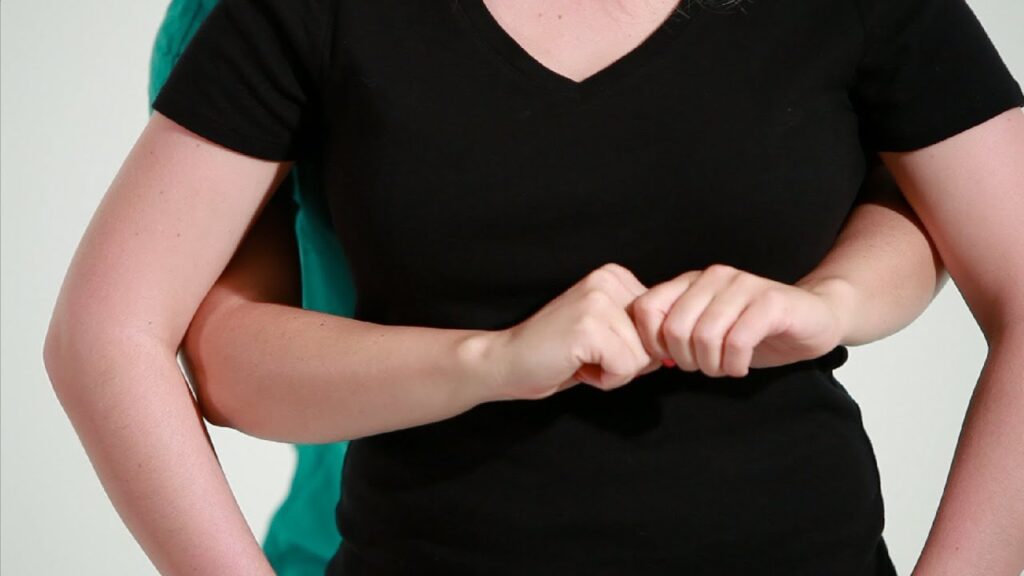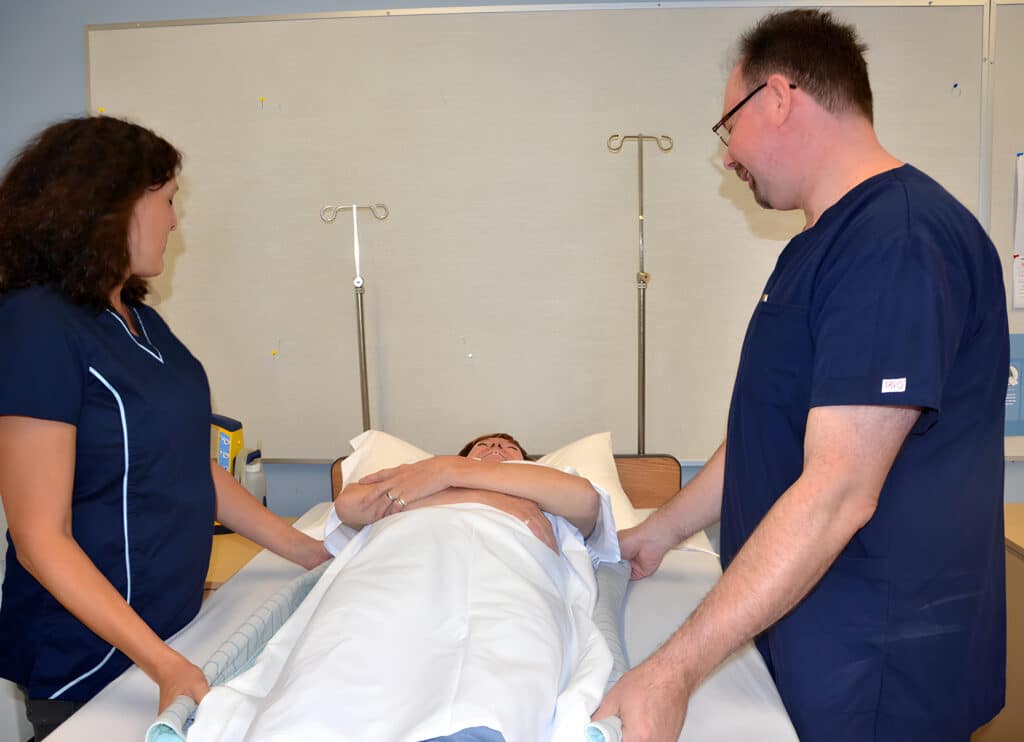Written by Hollie Finders, RN
Hollie Finders is a registered nurse with years of experience working in the health care field. She has degrees in both biochemistry and nursing. After working with patients of all ages, Hollie now specializes in pediatric intensive care nursing. Hollie’s LinkedIn
Procedure
Equipment needed: trashcan, biohazard container
- With both hands still gloved, grasp the glove at the palm of your non-dominant hand and pull the glove off, turning it inside out in the process.
- Hold that glove in the center of your gloved hand.
- Using your non-gloved hand, insert two fingers underneath the cuff of the glove.
- Carefully pull the glove off, while turning the glove inside out. The other glove should be enclosed inside this glove.
- Dispose gloves in the proper biohazard container.
- Remove goggles.
- Untie the disposable gown at the neck and the waist.
- Grasping the inside of the gown near the neck ties, pull the gown down off of one arm and slide the arm out.
- Repeat procedure for remaining arm.
- Touching only the inside surface of the gown, roll the gown to enclose the contaminated side.
- Dispose the gown in the proper biohazard container.
- Remove the mask by untying the bottom ties and then the top ties, or remove the elastic bands from around the ears.
- Dispose of the mask into the trashcan.
- Perform hand hygiene.
Important Information
It is important to follow the correct procedure while removing personal protective equipment to avoid contaminating your skin or clothing. The most common source of contamination in this process stems from improper removal of gloves [1]. Gloves are often the most soiled piece of equipment. To avoid contaminating your skin or the other equipment worn, gloves should always be removed first. Then remove the goggles, gown, and mask, in that order.
Disposable equipment should not be reused. These items should be discarded into the proper receptacles: mainly biohazard containers or waste bins. Reusable items, on the other hand, should be properly decontaminated and stored according to facility policy. As a reminder, use of personal protective equipment does not take the place of proper hand hygiene. Always thoroughly wash and dry your hands after removing and disposing of the equipment.
References

